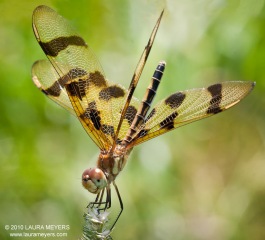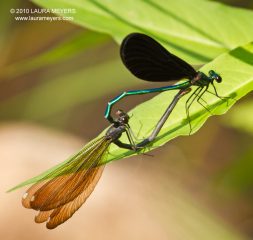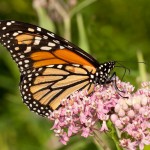The picture of this Aerial Yellowjacket was taken at the Shakespeare Garden in Central Park, New York City. I took this picture with my CANON EOS20D with the CANON 100mm Macro lens.Yellowjackets have sometimes been mistakenly called bees but they are actually in the wasp family. Although they lack the pollen-carrying structures of bees, yellowjackets can be minor pollinators when visiting flowers.
The Shakespeare Garden in Central Park is a very beautiful well maintained garden. It was a delight for me to photograph insects with these beautiful unusual flowers giving me many options for composition.








